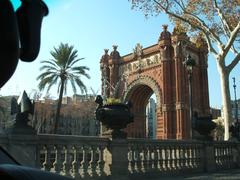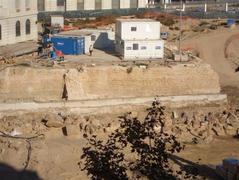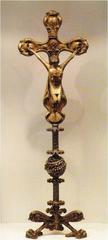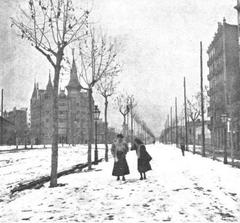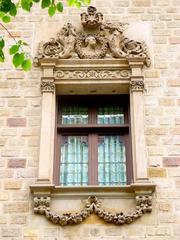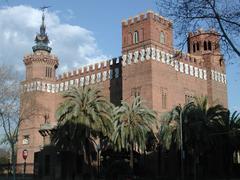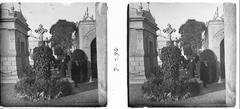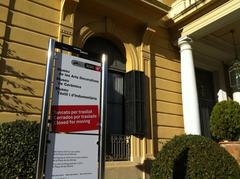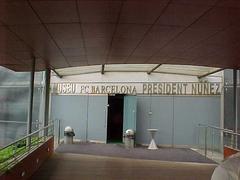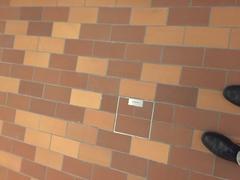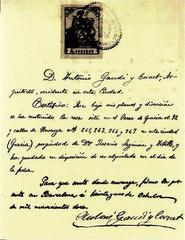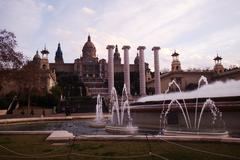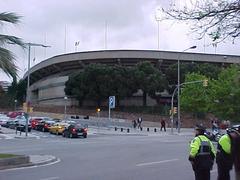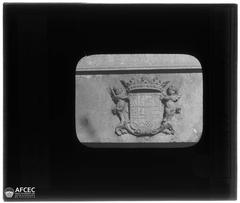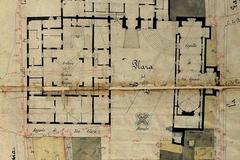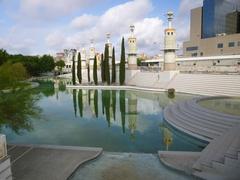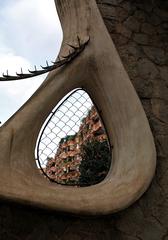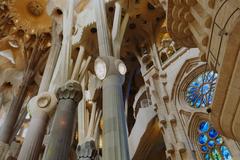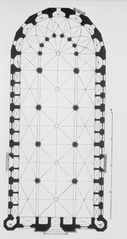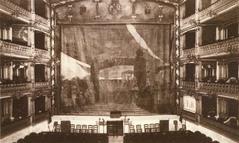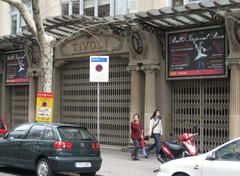Comprehensive Guide to Visiting Palau Güell, Barcelona, Spain
Date: 17/07/2024
Introduction
Palau Güell is an architectural marvel nestled in the vibrant heart of Barcelona, Spain. Designed by the illustrious Antoni Gaudí, this modernist masterpiece was commissioned by the influential industrialist Eusebi Güell in the late 19th century. As a residence that epitomized the opulence and artistic spirit of Barcelona’s elite, Palau Güell stands as a testament to Gaudí’s genius and the city’s rich cultural heritage. The building’s unique blend of Gothic and Mudéjar influences, coupled with Gaudí’s innovative use of space and light, make it an essential destination for architecture enthusiasts, history buffs, and curious travelers alike. Recognized as a UNESCO World Heritage Site, Palau Güell not only offers a glimpse into the luxurious lifestyle of the past but also serves as a vibrant cultural hub in contemporary Barcelona. This comprehensive guide provides valuable insights into the history, architectural significance, and practical visiting information for Palau Güell, ensuring a fulfilling and enriching experience for all visitors (Palau Güell official website).
Table of Contents
History of Palau Güell
Origins and Commissioning
Palau Güell, an architectural gem in Barcelona, was commissioned by the industrial tycoon Eusebi Güell in 1885. Güell, a prominent Catalan entrepreneur and politician, sought to create a residence that would reflect his wealth and social status. He entrusted this ambitious project to the then relatively unknown architect Antoni Gaudí, who would later become one of the most celebrated figures in modernist architecture. The construction of Palau Güell began in 1886 and was completed in 1888, coinciding with the Barcelona Universal Exposition, which significantly boosted the city’s international profile.
Architectural Design and Innovations
Antoni Gaudí’s design for Palau Güell was groundbreaking, blending Gothic and Mudéjar influences with his unique modernist vision. The building’s façade, characterized by its parabolic arches and intricate ironwork, was a departure from the conventional architectural styles of the time. Gaudí’s innovative use of space and light is evident throughout the structure, particularly in the central hall, which features a parabolic dome with perforations that allow natural light to filter through, creating a celestial effect.
One of the most notable aspects of Palau Güell is its use of materials. Gaudí employed a variety of high-quality materials, including marble, wood, and wrought iron, to create a luxurious yet functional living space. The building’s interior is adorned with intricate mosaics, stained glass windows, and ornate ceilings, showcasing Gaudí’s attention to detail and craftsmanship.
Cultural and Historical Significance
Palau Güell holds a significant place in the cultural and historical landscape of Barcelona. It was one of the first major projects that established Gaudí’s reputation as a master architect. The building’s innovative design and construction techniques influenced subsequent modernist architecture in Barcelona and beyond.
The residence also played a crucial role in the social and cultural life of the city. Eusebi Güell was a prominent patron of the arts, and Palau Güell served as a venue for numerous cultural events, including concerts, literary gatherings, and art exhibitions. The building’s opulent interiors and state-of-the-art facilities made it a popular meeting place for Barcelona’s elite.
UNESCO World Heritage Site
In 1984, Palau Güell was designated a UNESCO World Heritage Site as part of the “Works of Antoni Gaudí” collection, which includes several other iconic buildings designed by the architect. This recognition underscores the building’s architectural and cultural significance and its contribution to the global heritage of modernist architecture. The UNESCO listing has helped to preserve Palau Güell and ensure its continued maintenance and restoration.
Restoration and Preservation Efforts
Over the years, Palau Güell has undergone several restoration and preservation efforts to maintain its structural integrity and aesthetic appeal. The most extensive restoration project took place between 1983 and 1993, during which the building was meticulously restored to its original condition. This project involved the repair of structural elements, the restoration of decorative features, and the installation of modern amenities to ensure the building’s continued use as a museum and cultural center.
In recent years, additional restoration efforts have focused on preserving the building’s unique architectural features and ensuring its compliance with modern safety and accessibility standards. These efforts have included the restoration of the building’s façade, the repair of its iconic chimneys, and the installation of climate control systems to protect its interior from environmental damage.
Palau Güell in Contemporary Culture
Today, Palau Güell is a popular tourist attraction and a symbol of Barcelona’s rich cultural heritage. The building’s unique architecture and historical significance continue to attract visitors from around the world. It also serves as a venue for cultural events, including concerts, exhibitions, and educational programs, ensuring that it remains an active and vibrant part of the city’s cultural life.
Palau Güell’s enduring appeal lies in its ability to bridge the past and the present, offering visitors a glimpse into the opulent lifestyle of Barcelona’s elite in the late 19th century while showcasing the innovative spirit of Antoni Gaudí. The building’s continued preservation and use as a cultural center ensure that it will remain a cherished part of Barcelona’s architectural and cultural heritage for generations to come.
For more information on Palau Güell, you can visit the official Palau Güell website.
Visiting Information
Ticket Prices
Visitors can purchase tickets to Palau Güell online or at the entrance. Prices may vary depending on the type of ticket and any ongoing promotions. It’s advisable to check the official website for the most up-to-date pricing information.
Opening Hours
Palau Güell is typically open to the public from Tuesday to Sunday, with varying hours depending on the season. It is recommended to verify the current visiting hours on the official website before planning your visit.
Travel Tips
To make the most of your visit to Palau Güell, consider arriving early to avoid crowds. Guided tours are available and provide valuable insights into the history and architecture of the building. Photography is allowed, but be mindful of other visitors.
Nearby Attractions
Palau Güell is conveniently located near several other notable attractions in Barcelona, including La Rambla, the Gothic Quarter, and the Barcelona Cathedral. Visitors can easily explore these sites in conjunction with their visit to Palau Güell.
Accessibility
Palau Güell is committed to providing accessibility for all visitors. The building is equipped with ramps and elevators to accommodate wheelchair users. Accessible restrooms are also available on-site. For specific accessibility inquiries, it’s best to contact the visitor services directly.
Special Events
Palau Güell regularly hosts special events, including concerts, art exhibitions, and cultural programs. These events offer a unique opportunity to experience the building in a different light. Check the official website for information on upcoming events and ticket availability.
FAQ
Q: What are the opening hours of Palau Güell? A: Palau Güell is open from Tuesday to Sunday, with specific hours varying by season. Always check the official website for the latest information.
Q: How much do tickets to Palau Güell cost? A: Ticket prices can vary, so it’s best to check the official website for the most current pricing information.
Q: Is Palau Güell accessible to visitors with disabilities? A: Yes, Palau Güell is accessible to visitors with disabilities, with ramps, elevators, and accessible restrooms available.
Q: Are guided tours available at Palau Güell? A: Yes, guided tours are available and provide valuable insights into the history and architecture of Palau Güell.
Q: Can I take photos inside Palau Güell? A: Yes, photography is allowed inside Palau Güell, but please be respectful of other visitors.
Conclusion
Palau Güell remains a beacon of Barcelona’s architectural and cultural legacy, seamlessly bridging the past and present. From its groundbreaking design by Antoni Gaudí to its pivotal role in the city’s social and cultural life, this iconic structure continues to captivate visitors from around the globe. The meticulous restoration efforts and UNESCO recognition underscore its enduring significance and commitment to preservation. Whether you’re exploring the intricate ironwork, marveling at the celestial light filtering through the central hall, or attending one of the many cultural events hosted within its walls, Palau Güell offers a unique and immersive experience that highlights the innovative spirit and rich heritage of Barcelona. By visiting Palau Güell, you not only step into a piece of history but also support its ongoing preservation and role as a cultural landmark for future generations (Palau Güell official website).


